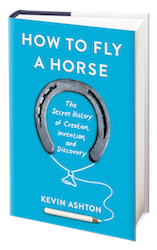Edmond Albius 1829-1880
Le geste d’Edmond, or Edmonds gesture. The story of how a 12 year old slave created a $100 million a year industry.
In the Indian Ocean, fifteen hundred miles east of Africa and four thousand miles west of Australia, lies an island called Réunion. A bronze statue stands in Sainte-Suzanne, one of Réunion’s oldest towns. It shows an African boy, dressed as if for church, in a single-breasted jacket, bow tie, and flat-front pants that gather on the ground. He wears no shoes. He holds out his right hand, not in greeting but with his thumb and fingers coiled against his palm, perhaps about to flip a coin. He is twelve years old, an orphan and a slave, and his name is Edmond.
To understand why Edmond stands here, on this lonely ocean speck, his hand held just so, we must travel west and back, thousands of miles and hundreds of years. On Mexico’s Gulf Coast, Papantla where the inhabitants have dried the fruit of a vine like orchid and used it as a spice for more millennia than they remember.
In 1400, the Aztecs took it as tax and called it “black flower.” In 1519, the Spanish introduced it to Europe and called it “little pod,” or vainilla. In 1703, French botanist Charles Plumier renamed it “vanilla.
Vanilla captivated the Europeans. Anne of Austria, daughter of Spain’s King Philip III, drank it in hot chocolate. Queen Elizabeth I of England ate it in puddings. King Henry IV of France made adulterating it a criminal offense punishable by a beating. Thomas Jefferson discovered it in Paris and wrote America’s first recipe for vanilla ice cream.
But no one outside Mexico could make it grow. For three hundred years, vines transported to Europe would not flower. It was only in 1806 that vanilla first bloomed in a London greenhouse and three more decades before a plant in Belgium bore Europe’s first fruit. The flower in London was a chance occurrence. The fruit in Belgium came from complicated artificial pollination.
It was not until late in the nineteenth century that Charles Darwin inferred that a Mexican insect must be vanilla’s pollinator, and not until late in the twentieth century that the insect was identified as a glossy green bee called Euglossa viridissima. Without the pollinator, Europe had a problem. Demand for vanilla was increasing, but Mexico was producing only one or two tons a year. The Europeans needed another source of supply. The Spanish hoped vanilla would thrive in the Philippines. The Dutch planted it in Java. The British sent it to India. All attempts failed.
This is where Edmond enters. He was born in Sainte-Suzanne in 1829. At that time Réunion was called Bourbon. His mother, Mélise, died in childbirth. He did not know his father. When Edmond was a few years old, his owner, Elvire Bellier-Beaumont, gave him to her brother Ferréol in nearby Belle-Vue. Ferréol owned a plantation. Edmond grew up following Ferréol Bellier-Beaumont around the estate, learning about its fruits, vegetables, and flowers, including one of its oddities — a vanilla vine Ferréol had kept alive since 1822.
Like all the vanilla on Réunion, Ferréol’s vine was sterile. French colonists had been trying to grow the plant on the island since 1819. Réunion saw no more success with vanilla than Europe’s other colonies had. The orchids seldom flowered and never bore fruit.
Then, one morning late in 1841, Ferréol took his customary walk with Edmond and was surprised to find two green capsules hanging from the vine. His orchid, barren for twenty years, had fruit. What came next surprised him even more. Twelve-year-old Edmond said he had pollinated the plant himself. He asked for a demonstration. Edmond pulled back the lip of a vanilla flower and, using a toothpick-sized piece of bamboo to lift the part that prevents self-fertilization, he gently pinched its pollen-bearing anther and pollen-receiving stigma together. Today the French call this le geste d’Edmond — Edmond’s gesture. Ferréol called the other plantation owners together, and soon Edmond was traveling the island teaching other slaves how to pollinate vanilla orchids. After seven years, Réunion’s annual production was a hundred pounds of dried vanilla pods. After ten years, it was two tons. By the end of the century, it was two hundred tons and had surpassed the output of Mexico.
Ferréol freed Edmond in June 1848. Edmond left the plantation for the city and was imprisoned for theft. Ferréol was unable to prevent the incarceration but succeeded in getting Edmond released after three years instead of five. Edmond died in 1880, at the age of fifty-one. A small story in a Réunion newspaper, Le Moniteur, described it as a “destitute and miserable end.”
In 1841, on the day of Edmond’s demonstration to Ferréol, the world produced fewer than two thousand vanilla beans, all in Mexico, all the result of pollination by bees. On the same day in 2010, the world produced more than five million vanilla beans, in countries including Indonesia, China, and Kenya, almost all of them — including the ones grown in Mexico — the result of le geste d’Edmond.
 Excerpted from How to Fly a Horse: The Secret History of Creation, Invention, and Discovery, by Kevin Ashton, available here.
Excerpted from How to Fly a Horse: The Secret History of Creation, Invention, and Discovery, by Kevin Ashton, available here.
